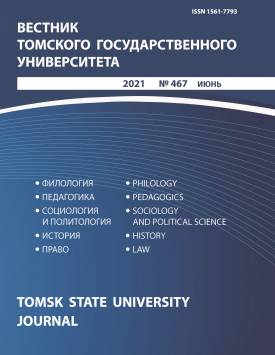Features of the Digital Behavior of Users with Social Media Addiction
The aim of this study was to analyze the features of digital behavior of VKontakte users with varying degrees of severity of social networking addiction. Social networking addiction is a behavior addiction which was found to be related to depression, anxiety, loneliness, ADHD, fear of missing out, and a number of behavioral impairments. The study was conducted on 345 social networks users from Russia. Among them, 95 participants provided a link to their VKontakte profiles for the purposes of further content analysis. Participation in the study was voluntary, no rewards for participation were expected. The severity of social networking addiction was measured with the Bergen Social Media Addiction Scale (BSMAS) modified by C.S. Andreasse and colleagues. The scale contains 6 items related to 6 dependency parameters: Salience, Craving/Tolerance, Mood Modification, Relapse/Loss of Control, Withdrawal, and Conflict/Functional Impairment. The scale was adapted and translated into Russian for the purposes of this study. Data on the features of digital behavior was collected using content analysis. The information was obtained through the VKontakte API - an interface for accessing vk.com databases using HTTP requests. To export the data, a special VK library was used. Having downloaded the list of identifiers of 95 users, we received the following data in a machine-readable format: the number of friends in the profile, the number of subscribers, the type of account (closed/opened), the presence/absence of a completed status. The whole algorithm was implemented in the Python 3 programming language. The profile picture type was defined “manually”. The pictured were divided into two types: photographs that supposedly depict the user (portraits) and other images (drawings and illustrations without a person). To testify the reliability of the adapted scale, Cronbach’s a method was applied. The Shapiro-Wilk test was used to test the normality of distribution of the Bergen Social Media Addiction Scale. Kendall’s correlation coefficient was applied to testify the correlational research hypotheses, while Wilcoxon’s test was applied to testify hypotheses about differences between independent groups of users. The analysis revealed that higher levels of addiction is positively correlated with the number of friends on the profile and the frequency of social media use. We also found that such behavioral characteristics as hiding profile information, using a third-party image as an “avatar”, filling in the “status” column, agreeing to share a link to a profile to participate in the study, as well as the number of subscribers, are not related to the severity of social media addiction. Practical applicability, limitations, and directions for future researches were discussed.
Keywords
social media, digital behavior, social media addiction, internet addiction, content analysisAuthors
| Name | Organization | |
| Alekseev Gleb A. | Higher School of Economics | glebsseriousacc@gmail.com |
| Dyuldenko Aleksandr A. | Kriptonite; Higher School of Economics | 2017126@mail.ru |
References

Features of the Digital Behavior of Users with Social Media Addiction | Vestnik Tomskogo gosudarstvennogo universiteta – Tomsk State University Journal. 2021. № 467. DOI: 10.17223/15617793/467/13
